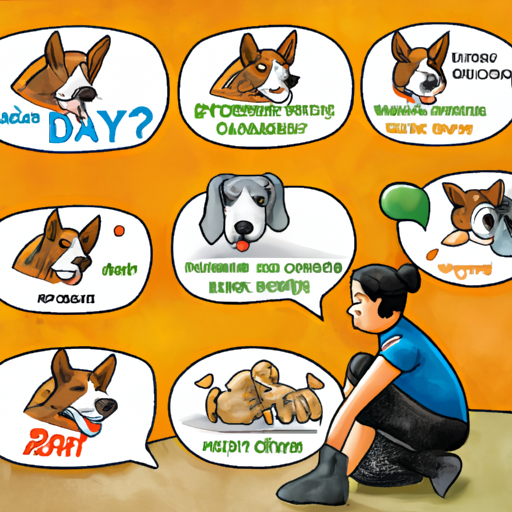Understanding Canine Communication
Dogs might not speak our language, but they have their unique ways of communication. You, as their caregiver, need to decipher their language, their barks, whines, and body language.
- Tail Wagging: A wagging tail doesn’t always mean a happy dog. Pay attention to the direction and speed of the wag.
- Barking: Dogs bark for many reasons — attention, warning, fear, boredom. Identifying the type of bark can help you understand their needs.
- Body Posture: A relaxed posture usually indicates a calm and content dog, while hunched or tense postures might mean fear or aggression.
Remember, every dog is unique, and their communication might vary.
Building a Bridge of Understanding
Talking to dogs involves more than just speaking. It’s about building a bond, a language of love and trust between you and your furry friend.
- Patience: Dogs learn through repetition and reinforcement. Be patient with them.
- Consistency: Use the same words or gestures consistently for specific commands or actions.
- Positive Reinforcement: Always reward good behavior. It can be a treat, a pat, or words of praise.
Decoding Canine Emotions
Dogs are emotional creatures, capable of feeling joy, fear, love, and even grief.
| Emotion | Signs |
|---|---|
| Joy | Wagging tail, relaxed body, playful behavior |
| Fear | Lowered body, tucked tail, ears back |
| Anger | Bared teeth, growling, stiff body |
Understanding these signs will help you respond to their emotional needs effectively.
Learning Canine Language
To talk to dogs, you have to learn their language. Here are some tips:
- Observe: Spend time watching your dog interact with their environment.
- Engage: Play with your dog. It’s a great way to understand their signals.
- Educate: Read about canine behavior and consult with experts if needed.
Implementing What You’ve Learned
Once you’ve understood your dog’s language, it’s time to implement your knowledge. Remember, it’s a continuous process. You’ll learn more about your dog every day.
- React: Respond appropriately to their signals.
- Communicate: Use your body language and voice to communicate with them.
- Love: Above all, show them love and kindness. It’s the universal language that all dogs understand.
Frequently Asked Questions
Q: How long does it take to understand a dog’s language?
A: It varies. Some people may understand their dog’s signals within weeks, while others may take months.
Q: Can all dogs be trained to understand commands?
A: Yes, with patience, consistency, and positive reinforcement, all dogs can be trained.
Q: What to do if a dog shows signs of aggression?
A: Try to identify the source of their aggression. If it persists, consult a professional dog trainer or a vet.
Q: Do dogs understand human emotions?
A: Yes, dogs are very perceptive and can pick up on our emotions.
Q: Can my dog understand me when I talk to them?
A: While they may not understand the words, they can understand the tone of your voice and your body language.



